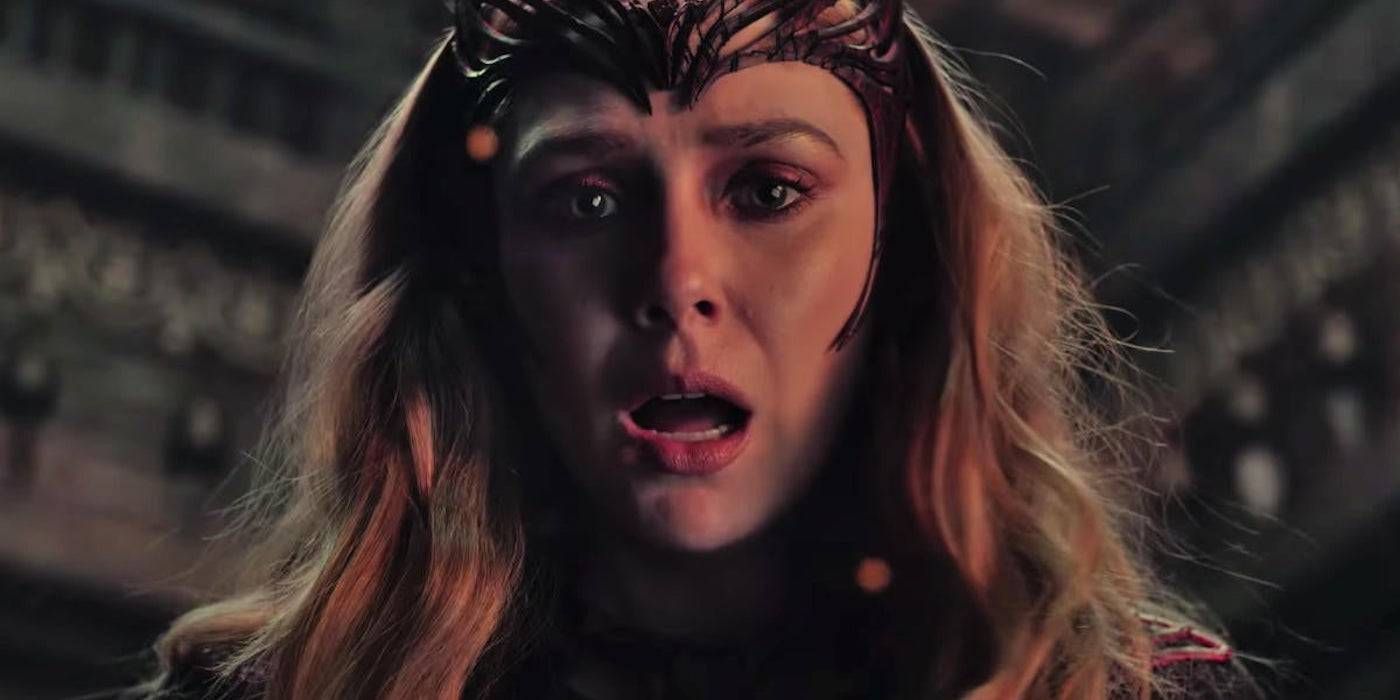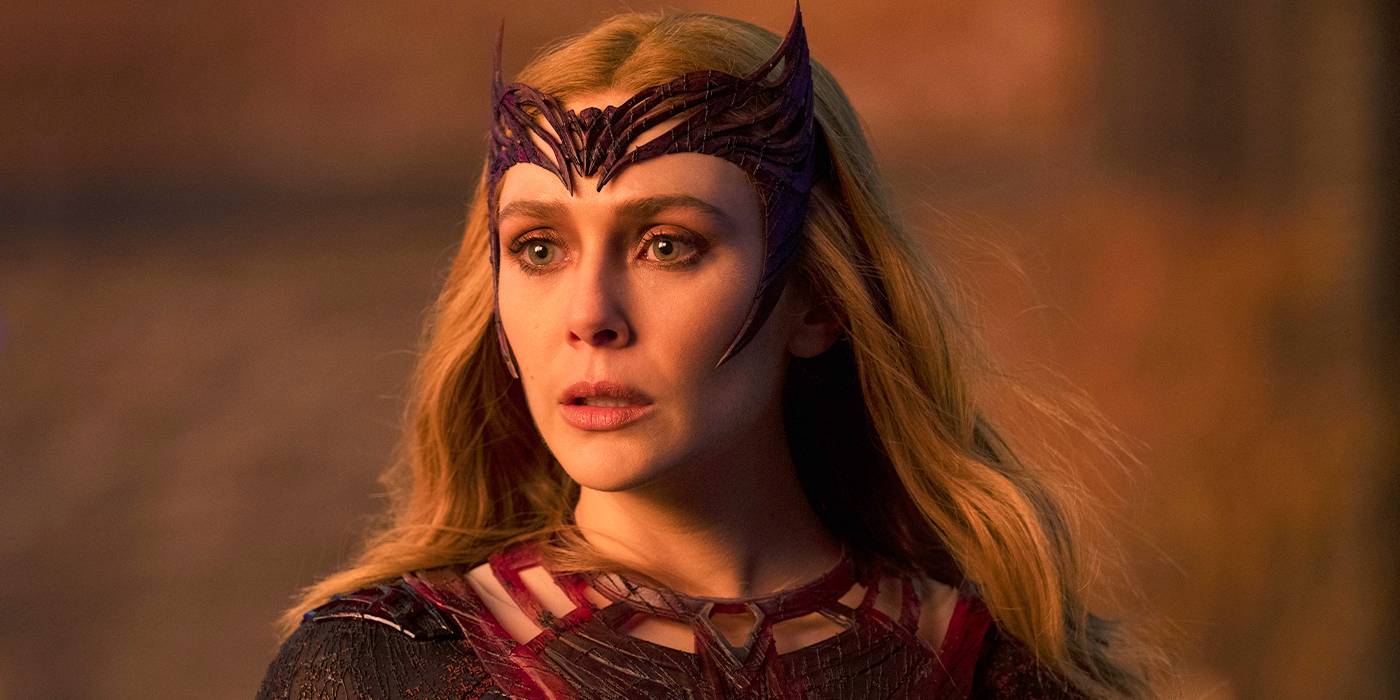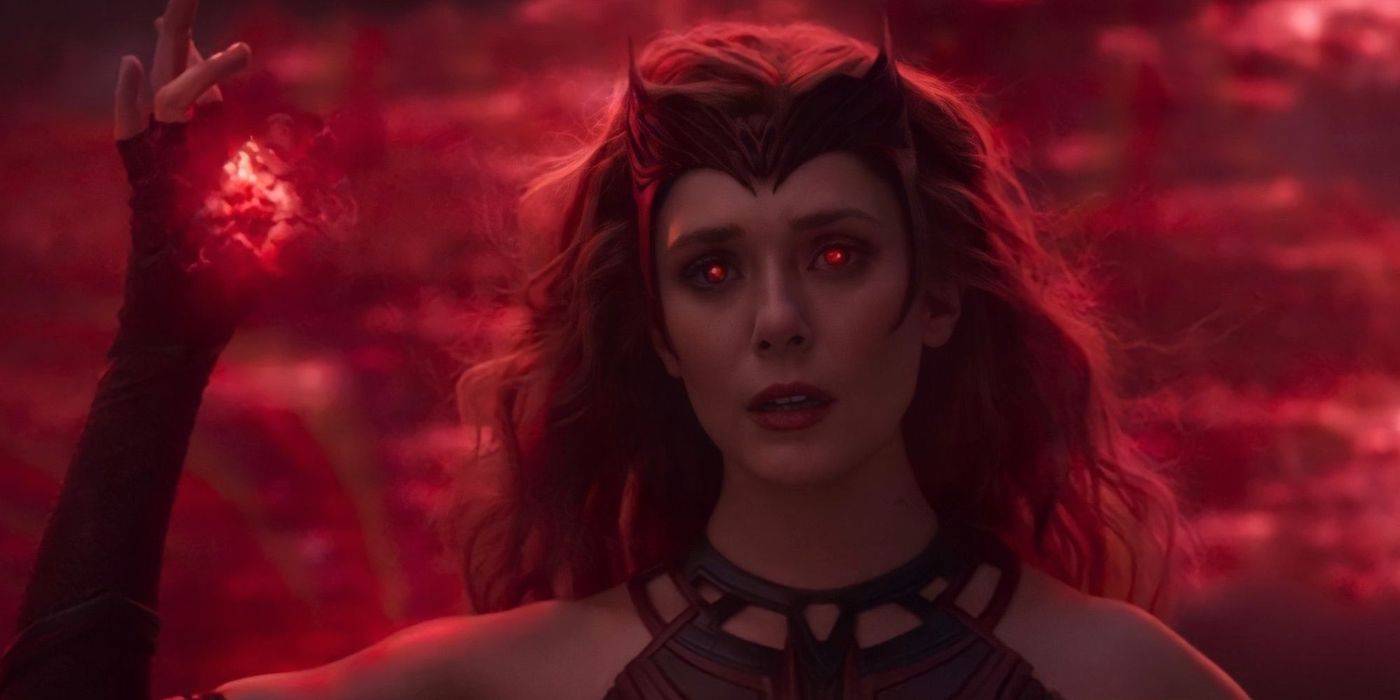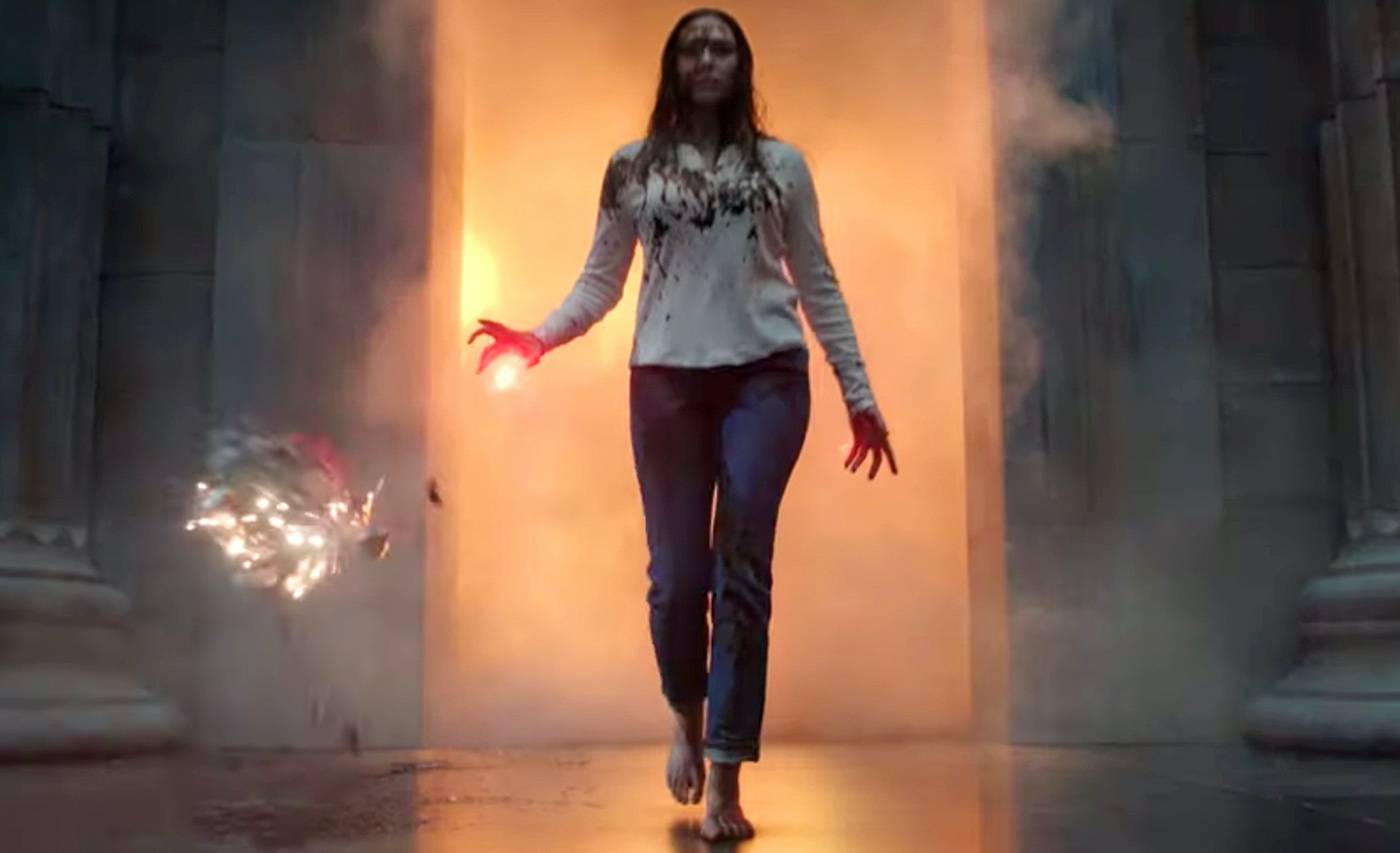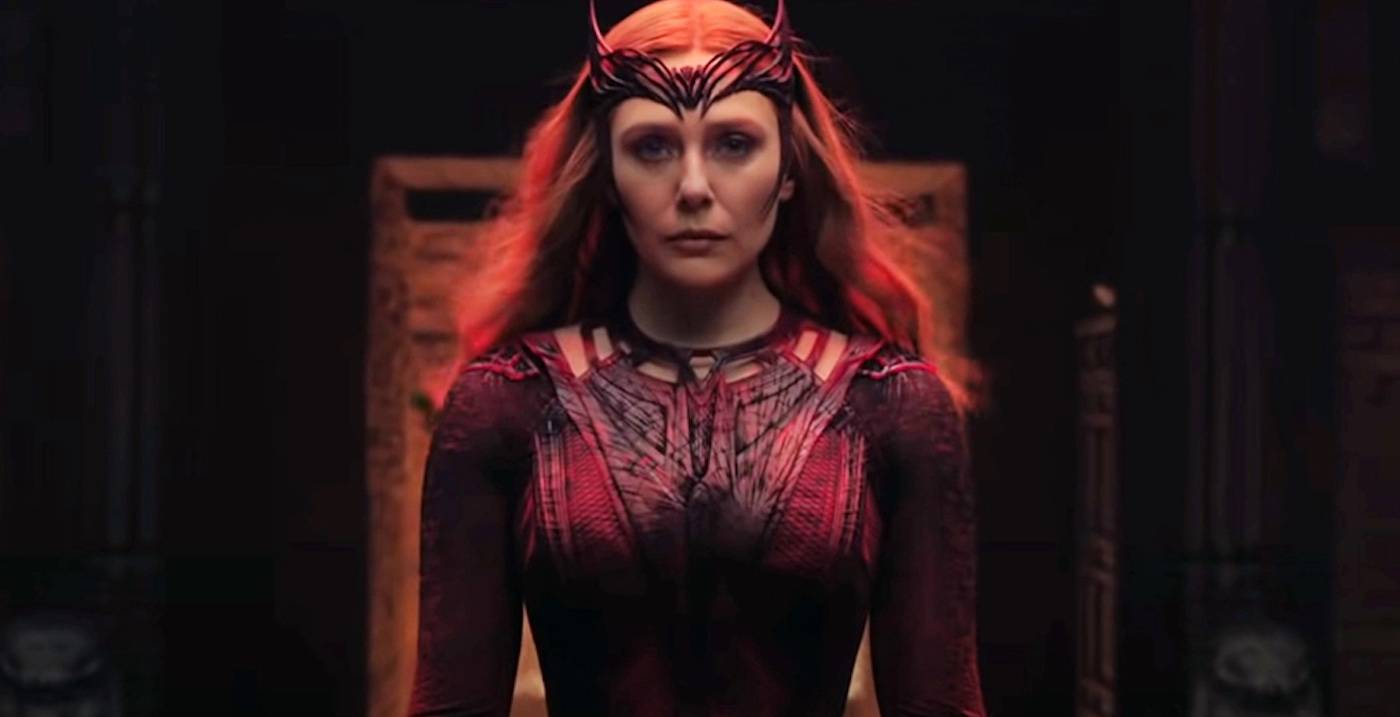In Doctor Strange in the Multiverse of Madness, Wanda Maximoff (Elizabeth Olsen), a redeemable hero only a few months ago, has been reduced to a Marvel plot device for a Doctor Strange movie. And it worked, as the new Strange film recently hit $900 million worldwide. Director Sam Raimi and writer Michael Waldron, as well as Marvel apologists, argue that Wanda is victim to stages of grief, which amounts to an incongruent Scarlet Witch committing mass murder and regresses Wanda to a manipulative archetype desperate to be a mother again. The multilayered and empathetic Wanda from her Phase Three journey, and recently with WandaVision, is now erased. Instead of character growth, Phase Four chooses to replace her arc with an unforgiving caricature that capitalizes on the audience’s prejudice. Doctor Strange in the Multiverse of Madness instead uses misogynistic justifications to villainize one of its few female lead characters. Marvel has a long history of marginalizing Wanda and her arc for profit, so who is at fault, and why are they doing this?
Related
Thor: Love and Thunder Video Reveals New Christian Bale Villain Dialogue
Through the lens of Wanda Maximoff’s arc in comics, television, and film, we can dissect misogynistic writing choices used to propagate patriarchal messages to sell comics and tickets. By treating Wanda as a secondary character with stereotypical flaws, the financial incentive is clear: attract male audiences and validate their sexist subconscious. This is clearly explained by Steve Englehart, a Marvel Comics writer who focused on Scarlet Witch in the 80s, “Ever since the original Captain Marvel/Superman, most comics characters have been arrested male adolescents because most comics readers are male adolescents. And male adolescents fear strong women.” Before exploring how Wanda’s arc is destroyed in service of Doctor Strange 2 and the greater Marvel agenda, we need to begin with some of the comics that first smeared Wanda which would later inspire the MCU’s fourth phase.
In the 1960s, comics that feature women were rare, but their stories prove a sexist cycle that Marvel relies on. Wanda Maximoff begins her 60s arc as a reluctant villain, characterized as submissive with unpredictable powers. Scarlet Witch appears in several comics over the next decade, often superficially written as a romantic interest for prominent heroes and easily manipulated by those who want to use her. It wasn’t until Englehart’s 80s works, The Vision and the Scarlet Witch and West Coast Avengers, that Wanda becomes a multidimensional character who has her own complete stories and arcs. Due to market competition, Marvel ends up bankrupt in 1996 and proceeds to use Wanda’s vague powers like a sponge to retcon poor decisions and reboot some of their unsuccessful stories.
The company uses her as an object to get what they want, as they continue to do today. The comic retcons and reboots on the back of Wanda’s character are financial decisions at the cost of her arc, thereby tarnishing Scarlet Witch, making her irredeemable for the foreseeable future. Specifically, with the early 2000s comics, Avengers Disassembled and House of M, we’re introduced to a Scarlet Witch who is a frantic, delirious mother who hallucinates her children and starts killing heroes, even committing mutant genocide. These reboots allow Marvel to create comics that would soon inspire Kevin Feige’s MCU with 2008’s Iron Man. The way Wanda was used as a plot device continues to help Marvel, as they repeatedly exploit her self-destructive arc to keep churning out stories, most recently seen with Doctor Strange in the Multiverse of Madness. But, did the comics really create a foolproof cycle to restart their universe, and how would that even work?
By manipulating Wanda and feeding into audiences’ prejudice, Marvel has all the ingredients to perpetuate an infinite multiverse to prop up its male heroes: Create a woman protagonist that isn’t able to fully comprehend her own emotions or powers, exploit her naivety and mental health, manifest her trauma as a MacGuffin that can be a catalyst for destruction, retcon or reboot other arcs and stories in the aftermath, manufacture her as the villain of the reboot, and hocus pocus, you have a repackaged story that will print endless amounts of money! This is a profitable and easily restartable cycle. Thank god for the men at Marvel Comics that came up with that idea!
The treatment of Wanda in this horrific way parallels the nightmarish reality of women surrounded by patriarchal gaslights, constantly being pitted against themselves. In fairness, exploiting marginalized identities through misogynistic storytelling is much older than Marvel’s legacy, as some have traced Wanda’s arc back to Greek mythology with Medea. However, consumers of this content, whether it’s comics or film, have to hold its creators accountable for continuing this unhealthy cycle.
In 2019, Marvel hires Jac Shaeffer to be the showrunner of one of their only financed women-led products in 80 years. WandaVision is the first Disney+ Marvel series and portrays a grieving Wanda living in denial without her partner Vision, therefore, life without a family. She constructs a magical illusion that begins with her twin boys and escalates to enslaving hundreds of real people to fully realize an idyllic suburbia. Once Monica Rambeau (Teyonah Parris) becomes Wanda’s ally and helps her grieve, Wanda acknowledges her past and releases the innocent people, which in turn, forces her to give up her magical family. WandaVision is complicated but thoughtful in its lessons. Handling grief, mental health, and how self-destruction affects those closest to you is a very complex task and Shaeffer does so perfectly. The series concludes with a resolution that is bizarrely educational, as it doesn’t necessarily celebrate and forgive Wanda, but it honestly portrays her as complicated with flaws. Marvel fans rejoiced after the series finale, as they finally were given a complete arc for Wanda. But you know what’s sexier than successfully unpacking a woman’s trauma? Sam Raimi, apparently.
The aforementioned 2000s comics and Raimi’s newest Doctor Strange film mirror each other in how they destroy Wanda’s arc. Shaeffer’s WandaVision incredibly contextualizes Wanda’s grief; and yet, Multiverse of Madness chooses to vilify Wanda’s mental health and erase previous progress. After inspecting Multiverse of Madness, the integrity of the Marvel Cinematic Universe is up for debate. This movie is another example of regressive, cyclical storytelling that highlights Marvel’s culpability in destroying its female protagonists. There are no ethical motivations for the way they write Wanda’s villainy in this movie. Scarlet Witch loses her children and is a vengeful, mass-murdering mom that completely reverts to earlier stages of grief in WandaVision. She murders loads of innocent people, turns John Krasinski into Twizzlers, breaks Professor X’s (Patrick Stewart) neck, tries to kill a 14-year-old America Chavez (Xochitl Gomez), threatens incursions, and when she finally shows remorse, she collapses a mountain on herself destroying the sexist MacGuffin (Darkhold) that was created to justify her absurd wickedness.
Remember how I was talking about Marvel’s ingredients to restart its failed stories through women protagonists? They got us, again. Just to prove how much, here’s Raimi, explaining how he respected Shaeffer’s WandaVision, to Rolling Stone: “I just know that halfway, or maybe three-quarters of the way into our writing process, I’d first heard of this show they were doing and that we would have to follow it. Therefore, we had to really study what WandaVision was doing, so we could have a proper through line and character-growth dynamic. I never even saw all of WandaVision; I’ve just seen key moments of some episodes that I was told directly impact our storyline.”
However, someone that apparently did watch WandaVision, was Doctor Strange 2 writer, Michael Waldron. There are numerous quotes from Waldron defending his choice to write Wanda the way he did, so I’ll leave you with one to sum up the rest, via Entertainment, “This really became the story about Wanda and her pursuit of her kids, which is true to the character and the comics and the things that drive her mad in the comics. That’s what we chose to focus on.” Waldron explains how Wanda’s anger compounds with the Darkhold’s power, making her a reasonable villain. And as she destroys the Darkhold, she takes accountability for her wrongdoings, making her journey a tragedy as she perishes in the end. Nonetheless, with the Darkhold as an obvious MacGuffin, and Wanda killing herself to destroy all the Darkholds as a Deus ex Machina, it’s fairly clear Waldron wasn’t exactly paying respect to Wanda’s arc.
Marvel has found a way to retain its adolescent male audience by writing Wanda as a one-dimensional plot device. Trying to justify Marvel’s continued exploitation of its women characters is feeding into their cycle of misogynistic storytelling. Defending Wanda’s Marvel journey by using comic book lore or a psychology textbook to justify misogyny is so boring. But, I guess, as the writing told us, wasn’t Wanda being such a “Witch”?
